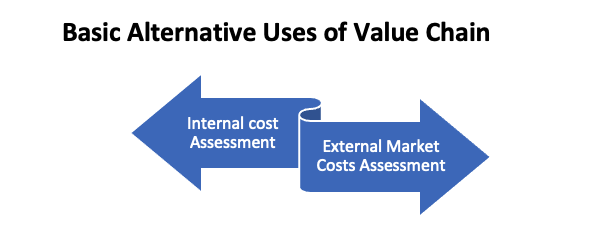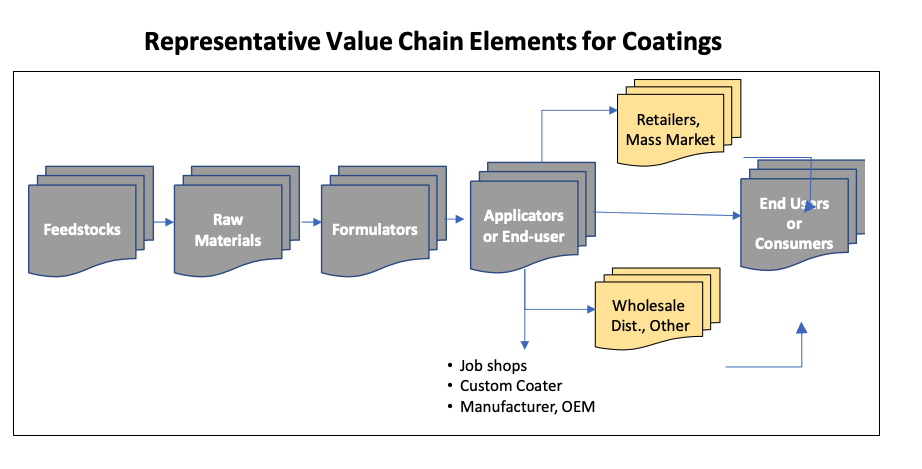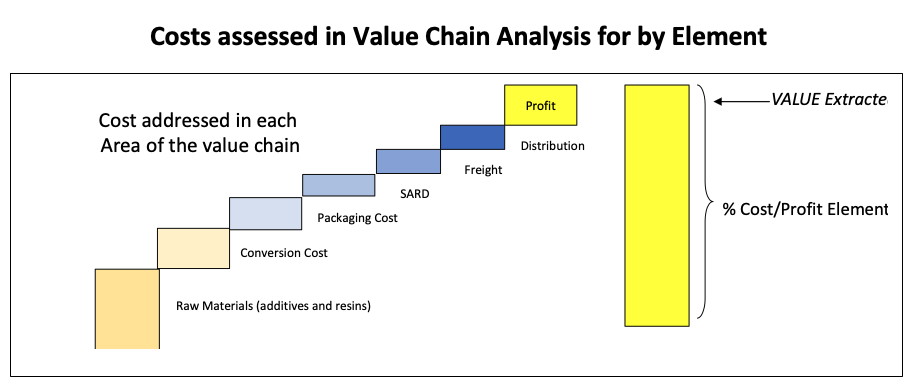The Value of Value-Chain Analysis
Value chain analysis is used to identify the individual costs that exist through the supply chain which impact price and profitability of the company’s products or services. The goal is to identify the constraints as well as the opportunities that may exist within a given market space for maximizing profitability.

Representative elements of the supply chain that are common to coatings manufacturing and important to address when doing a value chain analysis include the following:
The importance, within each of these elements, will vary significantly depending on the market(s), the technology and even the geographies that are being analyzed. For example, feedstock availability and vacillations in feedstock prices can play a major role in assessing price points, pricing policies and profitability expectations.
Raw material costs, both additives and resins, along with the actual costs to convert these raw materials to a finished product and then package it all need to be considered. Understanding these costs is key to setting a price point that provides the desired level of profitability and determining what price points are obtainable within a given market space.
From the position of the formulator, all these costs are ones that they can monitor, track. They are also ones that can be impacted through choice, operational efficiency, and management practice. A value chain can help identify and quantify them.
Forward from the formulator, value chain analysis in intended to reveal both the opportunities and/or the constraints that exist within a given market space for value-added pricing.
Market dynamics has a significant influence on the ability of suppliers to capture value (products or services). Having a strong value proposition for a given product (or services) is important. When these products provide clear differentiation from competitors, maximizing profits through setting the right price point at the outset of market introduction represents an opportunity. Again, an understanding of the market through a value chain analysis can be very helpful in this regard.
The various components of cost that are commonly considered in a value chain analysis are shown in the following illustration. Depending on the portion of the value chain being analyzed, not all these components of cost may apply or be relevant to a specific situation.
Management’s reasons and expectations for developing a value chain vary. The scope and bounds within which this effort is defined is always unique to the company, its product or services and its business situation. The fundamental objective for doing a value chain analysis is to understand all the elements of cost that impact profitability. The methodologies for doing a value chain analysis need to be defined at the outset to ensure that the focus for these ensue.


